Speakers

Mary Abood
BIOGRAPHY
Mary E. Abood is a Professor in the Department of Anatomy & Cell Biology and the Center for Substance Abuse Research at the Lewis Katz School of Medicine at Temple University. Dr. Abood obtained a Ph.D. in Pharmacology from the University of California, San Francisco and completed post-doctoral research at Stanford University. Dr. Abood’s laboratory has been investigating the endocannabinoid system, with a focus on its cellular receptors. Her lab has cloned the CB1 and CB2 cannabinoid receptors and identified some of the structural and concomitant functional features of these proteins. These studies are designed to elucidate the molecular mechanisms of CB receptor action. More recently, she has also focused on identifying novel cannabinoid receptor subtypes. These efforts have led to the characterization of GPR55 and GPR18 as two putative cannabinoid receptors.
Cannabinoid/Cannabis Signaling and Biology
CB1 and CB2 cannabinoid receptors (CB1, CB2) are members of the G protein coupled receptor (GPCR) family that mediate the effects of Δ9-tetrahydrocannabinol (Δ9-THC), the principal psychoactive constituent of marijuana (cannabis). Subsequent to the identification of CB1, endogenous cannabinoids (endocannabinoids) anandamide (AEA) and 2-arachidonoyl glycerol (2-AG) were discovered. A range of pharmacological and genetic tools have been developed and used to delineate “cannabinoid receptor”-mediated activity. CB1Rs and CB2Rs have both similarities and differences in their pharmacology. Both receptors recognize multiple classes of agonist and antagonist compounds and produce an array of distinct downstream effects. More recently, additional GPCRs that recognize cannabinoid ligands, GPR55 and GPR18 have been proposed as candidate cannabinoid receptors. This talk will introduce CB1 an CB2 signaling and biology, and the emerging pharmacological profile for GPR55 and GPR18.
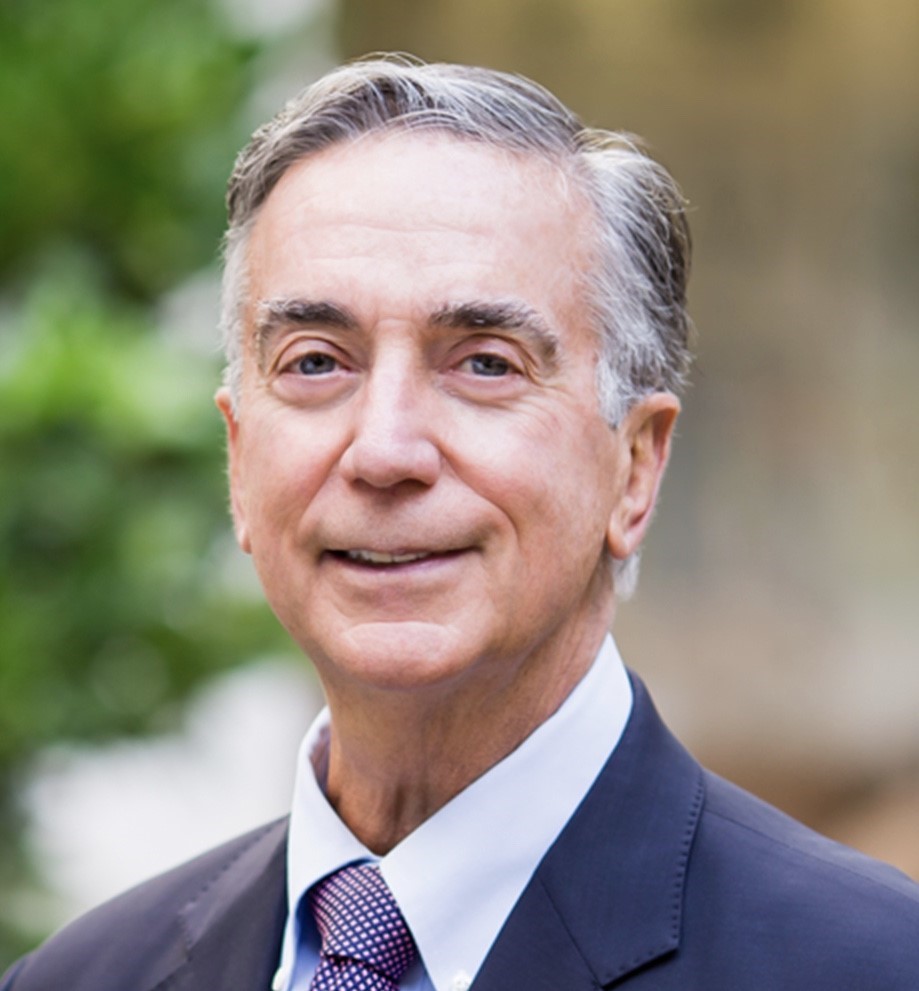
Donald I. Abrams, Session Co-chair
BIOGRAPHY
Donald I. Abrams, MD. is a Professor Emeritus of Medicine at the University of California San Francisco. He has an Integrative Oncology consultation practice at the UCSF Osher Center for Integrative Medicine. He received an A.B. in Molecular Biology from Brown University in 1972 and graduated from the Stanford University School of Medicine in 1977. After completing an Internal Medicine residency at the Kaiser Foundation Hospital in San Francisco, he became a fellow in Hematology/Oncology at the Cancer Research Institute of the University of California, San Francisco in 1980. He was one the original clinician/investigators to recognize and define many early AIDS-related conditions at San Francisco General Hospital where he also served as chief of Hematology-Oncology for 14 years. He has long been interested in clinical trials of complementary and alternative medicine interventions for HIV/AIDS and cancer, including evaluations of medicinal cannabis. In 1997 he received funding from the National Institute on Drug Abuse to conduct a clinical trial on the short-term safety of cannabinoids in HIV infection. Subsequently he was granted funds by the University of California Center for Medicinal Cannabis Research to continue studies of the effectiveness of cannabis in a number of clinical conditions. He completed a placebo-controlled study of smoked cannabis in patients with painful HIV-related peripheral neuropathy as well as a study evaluating vaporization as a smokeless delivery system for medicinal cannabis. He conducted a NIDA-funded trial investigating the pharmacokinetic interaction between vaporized cannabis and opioid analgesics in patients with chronic pain. His last study was an NIH-funded trial evaluating vaporized cannabis in patients with sickle cell disease. He co-authored the chapter on “Cannabinoids and Cancer” in the Oxford University Press Integrative Oncology text that he co-edited with Andrew Weil. He co-edits the NCI PDQ CAM Cannabinoids and Cancer website. He was a member of the National Academies of Sciences, Engineering and Medicine’s committee that published The Health Effects of Cannabis and Cannabinoids: Current State of Evidence and Recommendations for Research in January 2017.
Benefits of Cannabis Use for the Cancer Patient (Session Two)
Barriers to Conducting Clinical Cannabis Research (Session Seven)

Alexis Bakos, Session Co-chair
BIOGRAPHY
Dr. Bakos is Program Director of the Supportive Care and Symptom Management portfolio in the Division of Cancer Prevention, Community Oncology and Prevention Trials Research Group, where she oversees extramural research on the prevention or treatment of acute and chronic symptoms and morbidities related to cancer and treatment interventions. In addition, Dr. Bakos assists in the management of the NCI Community Oncology Research Program (NCORP).
Dr. Bakos has worked in a number of research positions within the federal government, including serving as Chief of the Diversity Training Branch within the Center to Reduce Cancer Health Disparities (NCI) where she coordinated the management of programs designed to improve the diversity of the cancer research workforce and served as Program Director at the National Institute of Nursing Research, NIH, where her responsibilities included scientific areas related to end of life/palliative care, informal caregiving, and long-term care. She also chaired the NIH End of Life Scientific Interest Group.

Gil Bar-Sela
BIOGRAPHY
Professor Gil Bar-Sela is a graduate of the Faculty of Medicine at Ben-Gurion University in Beer Sheva, Israel. He obtained his Oncology training at Rambam Health Care Campus in Haifa, Israel. In 2003, he received Board certification in Medical and Radiation Oncology. During 2005-06, he worked in research at the Radiation Oncology Branch of the NCI, Bethesda USA. In 2013, he received board certification in Palliative Medicine, as one of the founders in this field in Israel.
He is currently a Clinical Associate Professor at the Bruce Rapapport Faculty of Medicine of Technion, Haifa. His main Research Interests are: palliative and supportive care in Oncology, complementary/integrated medicine in Oncology, and the clinical areas of sarcoma and melanoma. In these research areas, by the mid-2020s, he had published over 160 papers in medical journals and books.
In November 2018, Prof. Bar-Sela was appointed as the Head of the Division of Oncology and Hematology, and as the Director of Beit-Shulamit, a new cancer center that is under construction in the Emek Medical Center. Prof. Bar-Sela also served as the elected Secretary of the Israeli Association for Clinical Oncology and Radiation Therapy and as the Chairman of the clinical Board of Oncology at the Faculty of Medicine, Technion, Israel.
Chronic Cannabis Use During Immunotherapy Treatment
PURPOSE: Therapeutic use of medical cannabis among cancer patients has become highly prevalent, while its overall effect on the immune system is unclear. This study aims to determine if cannabis consumption during immunotherapy affects therapy outcome for patients with advanced malignancies.
PATIENTS AND METHODS: We included 102 [68 immunotherapy group (I-G) and 34 immunotherapy plus cannabis (IC-G)] consecutive cancer patients who initiated one of the immune checkpoint inhibitors (ICI) therapy. Levels of serum Endocannabinoid (eCB) and eCB-like lipids levels were measured before and after immunotherapy in both groups. Safety and effectivity of cannabis treatment in advanced cancers commencing therapy with ICI blockers were assessed with time to tumor progression (TTP) used as a post hoc primary endpoint and overall survival (OS) while circulating levels of eCB as secondary endpoints with a minimum follow-up time of 7 months.
RESULTS: Kaplan Maier curve showed a significant difference in TTP [I-G 13.1m (95%CI 6.0-NAm) vs. IC-G 3.4m (95%CI 1.8-6.0m), p=0.0025] and OS [IG 28.5m (95%CI 15.6-NAm) vs. IC-G 6.4m (95%CI 3.2-9.7m), p=0.0009]. After adjusting for the treatment line, Cox regression analysis showed that cannabis consumption decreases OS (HR= 2.18, 95%CI 1.241-3.819. p=0.007) and TTP (HR= 1.95, 95%CI 1.17-3.26. p=0.011). The use of cannabis reduced grade ≥2 immune-related adverse events (iAE) (I-G 39% vs. IC-G 21%, p=0.057). Levels of baseline serum eCBs and eCB-like lipids, before immunotherapy, showed no significant differences between cannabis users to nonusers
CONCLUSION: We demonstrate for the first time that the use of cannabis as a palliative treatment in advanced cancer patients starting immunotherapy affects patients TTP and OS and suggests that its consumption should be carefully considered. We are now exploring the possibility that cannabis negatively affects homeostatic levels of lymphocyte populations and mapping T cell populations of cancer patients before and after initiation of cannabis usage.

Stacey Blansky
BIOGRAPHY
Stacey Blansky currently works for UPS as an Operations Management Specialist. She graduated from Cornell University in May 2020 with a Bachelor’s degree in Industrial and Labor Relations. In addition to labor, Stacey spent much of her undergraduate years studying law, culture and society. From Havana, Cuba to Lusaka, Zambia, her intellectual interests took her on professional endeavors across the globe. During her junior year at Cornell, she underwent treatment for Hodgkin’s Lymphoma while pursuing her degree, which allowed her to graduate alongside her peers. She currently resides in Binghamton, NY, with plans to explore the continental United States.
A Cancer Survivor's Experience
After receiving a diagnosis of Hodgkin’s Lymphoma at age 20, Stacey was determined to educate herself on holistic therapies that would supplement her chemotherapy. During this pursuit, she came across the New York State Medical Marijuana Program, where cancer was one of approximately ten qualifying conditions. The idea that plant-based medicine could mitigate the toxic effects of chemotherapy piqued Stacey’s interest. After reading through a handful of peer-reviewed journals, Stacey requested a medical card from her oncology office. She then registered as a medical marijuana patient in the state of New York and took monthly trips to a nearby dispensary for the duration of her cancer treatment. She utilized both CBD- and THC-dominant products to treat her side effects, which included nausea, insomnia and anxiety. She believes that supplementing cancer treatment with cannabis proved beneficial in managing these side effects, and looks forward to educating others on the benefits of medical marijuana.

Benjamin Blount
BIOGRAPHY
Ben Blount leads the Tobacco and Volatiles Branch in the Division of Laboratory Sciences at the Centers for Disease Control and Prevention. Before his two decades of work at CDC he studied analytical biochemistry at the University of California, Berkeley (PhD, 1994) and completed a postdoctoral fellowship in exposure science at the Biomedical Mass Spectrometry Unit of the University of New South Wales in Sydney, Australia in 1996. His recent research interests include assessing harmful and addictive exposures related to use of tobacco and cannabis products.
Potentially Harmful Inhalational Exposure Resulting from Smoked and Vaped Cannabis
The prevalence of cannabis use is increasing in the United States as more states allow wider adult use of cannabis products. However, the inhaled emissions of many of these products may be harmful. This presentation will describe harmful smoke constituents formed during the burning of marijuana and how smoking marijuana leads to increased exposure to these harmful smoke chemicals. Exposure data will include toxicokinetic data following controlled exposure as well as population-based data stratified by self-described cannabis use. Cannabis-based vaping products are now widely available in Canada and in numerous U.S. states that have legalized non-medicinal cannabis use. The increased prevalence of e-cigarette and vaping liquids contributed directly to the recent outbreak of e-cigarette, or vaping, product use–associated lung injury (EVALI). This presentation will also describe efforts to identify the cause of the EVALI outbreak and the importance of future product surveillance.
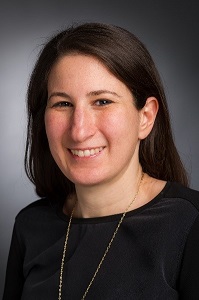
Ilana Braun, Session Co-chair
BIOGRAPHY
Ilana Braun, MD is chief of the Division of Adult Psychosocial Oncology at the Dana-Farber Cancer Institute and a clinical psychiatrist focused on patients with cancer across the disease continuum. A Brown University neuroscience concentrator (1996), she graduated from Albert Einstein College of Medicine (2001), completed Columbia-Presbyterian psychiatry residency (2005) and Brigham and Women’s Hospital consultation-liaison psychiatry fellowship (2006). She now leads a program of research centered on medicinal cannabis that includes preclinical, clinical and socio-behavioral explorations. This interest was piqued when she led a task force to develop evidence-based medicinal cannabis guidelines adopted by Mass General Brigham. She has gone on to conduct seminal qualitative and quantitative investigations on national cohorts of oncologic providers and cancer patients to understand their perspectives, knowledge-base and practices regarding medicinal cannabis use. In particular, she aims to understand the intersection between healthcare and medicinal cannabis with an ultimate goal of improving care. Currently, she is principal investigator on a qualitative study interviewing cannabis dispensary personnel about future directions in the field and a clinical trial to measure the anxiolytic effect of cannabidiol in patients with advanced cancer. She is also co-principal investigator in developing preclinical models for uncovering potentially druggable targets within the endocannabinoid system.
United States Legal Landscape for Medicinal Cannabis: Research & Clinical Implications
As of this election cycle, 35 states have adopted medicinal cannabis laws. In this legal sea change, federal and state laws increasingly conflict. This was not always case. Until the 1930s, federal and state law coordinated in a permissive stance toward cannabis. Driven by anti-immigration sentiment and timber interests, several states began to restrict cannabis and the federal government followed with the Marihuana Tax Act (1937) and the Controlled Substances Act (1970). The latter assigned cannabis a Schedule I designation, rendering cannabinoid research difficult to carry out. In the 1990s, state sentiment again led the way. Spurred by an activist ballot initiative, California became the first state to legalize medicinal cannabis and many states have followed suit. The degree to which the federal government enforces its cannabis prohibition varies by administration. These shifting federal and state approaches toward cannabis, as well as the yawning divide between them, have impacted medicinal cannabis research and clinical care, leaving cannabis a real conundrum for many researchers, clinicians and patients. We know that health care providers turn to cannabis clinically; in fact, more than 2% of the population in several states holds a medicinal cannabis license (that a healthcare professional authorized); however, medicinal cannabis research is extremely difficult to carry out; most professional medical associations offer no clinical guidance; medical practice infrastructure rarely takes cannabis into account; some physicians who recommend cannabis acknowledge they do not understand it well enough to do so; and patients using medicinal cannabis perceive a lack of clinical oversight. The key messages of Dr. Braun’s presentation are as follows: Clinicians should routinely ask their patients about cannabis to guide care in this domain; and rigorous bench and clinical research should be carried out using federal product, naturalistically, or outside the U.S.

Joseph Califano
BIOGRAPHY
Joseph Califano, MD, is an internationally recognized physician scientist who has translated multiple discoveries from his own laboratory into the clinic, including detection of HPV-related and other head and neck cancers. Dr. Califano serves as Physician in Chief, Moores Cancer Center at UC San Diego Health. He is a Professor of Surgery, Division of Otolaryngology-Head and Neck Surgery, Department of Surgery as well as Director, Head and Neck Cancer Center, Moores Cancer Center at UC San Diego Health. His major focus is the clinical practice of head and neck surgical oncology and the integration of basic, molecular biologic research in that practice. A graduate of Harvard Medical School, Dr. Califano performed his Otolaryngology-Head and Neck Surgery residency at Johns Hopkins Hospital, and completed a fellowship in head and neck surgical oncology at Memorial Sloan-Kettering Cancer Center. He then joined the faculty of Johns Hopkins and ultimately became Professor in the Head and Neck Division and the Division of Head and Neck Cancer Research at John Hopkins Department of Otolaryngology-Head and Neck Surgery before moving to UCSD. His surgical practice focuses on minimally invasive treatment of tumors of the larynx, pharynx, and neck, as well as treatment of premalignant conditions of the upper aerodigestive tract. Dr. Califano also currently directs an NIH funded laboratory investigating the molecular biologic basis of head and neck cancer. He has published over 300 articles related to both the clinical and basic scientific aspects of cancer, and currently serves as a member of the NCI Head and Neck Steering Committee and Council Member of the American Head and Neck Society, NCCN Board of Directors, as well as other professional organizations and editorial boards.
Cannabinoids and HPV-mediated OroPharynx Cancer: Genes and Weed
Human papillomavirus (HPV)-related head and neck squamous cell carcinoma (HNSCC) is associated with daily marijuana use and is also increasing in parallel with increased marijuana use in the United States. In addition, there is an association between daily marijuana use and development of HPV –mediated head and neck cancer. This presentation will explore the interaction between cannabinoids and HPV-positive HNSCC. The expression of cannabinoid receptors CNR1 and CNR2 was analyzed using The Cancer Genome Atlas (TCGA) HNSCC data. We used agonists, antagonists, siRNAs, or shRNA-based models to explore the roles of CNR1 and CNR2 in HPV-positive HNSCC cell lines and animal models. Cannabinoid downstream pathways involved were determined by Western blotting and analyzed in a primary HPV HNSCC cohort with single-sample gene set enrichment analysis (ssGSEA) and the OncoGenome Positioning System (Onco-GPS). In a TCGA cohort, the expression of CNR1 and CNR2 was elevated in HPV-positive HNSCC compared with HPV-negative HNSCC, and knockdown of CNR1/CNR2 expression inhibited proliferation in HPV-positive HNSCC cell lines. Specific CNR1 and CNR2 activation as well as nonselective cannabinoid receptor activation in cell lines and animal models promoted cell growth, migration, and inhibited apoptosis through p38 MAPK pathway activation. CNR1/CNR2 antagonists suppressed cell proliferation and migration and induced apoptosis. Using whole-genome expression analysis in a primary HPV HNSCC cohort, we identified specific p38 MAPK pathway activation signature in tumors from HPV HNSCC patients with objective measurement of concurrent cannabinoid exposure. This indicates that cannabinoids can promote progression of HPV-positive HNSCC through p38 MAPK pathway activation. Further exploration regarding involvement of cannabinoids in HPV-positive cancers is of interest.

Carey S. Clark
BIOGRAPHY
Carey S. Clark, RN, PhD, AHN-BC, RYT, FAAN is the Nursing Program Director and Chair of the Medical Cannabis Certificate Program at Pacific College of Health and Science. Dr. Clark has been a nurse since 1994, with experience in medical-surgical, pediatrics, psychiatric, home health, hospice care, and parish nursing. Dr. Clark has written many publications on diverse topics, ranging from integrating holistic modalities into nursing curriculum to the oncology nurse’s role in working with medicinal cannabis patients. She has presented to hundreds of oncology and holistic nurses regarding how they can best educate, coach, and support medical cannabis patient’s toward safe and effective use of medical cannabis. Dr. Clark is the immediate Past President of the American Cannabis Nurses Association and she is dedicated to educating nurses and patients around the endocannabinoid system, homeostasis, and the safe and effective use of cannabis to support healing. She in the editor of the bestselling Cannabis: A Handbook for Nurses (2021) published by Wolters Kluwer.
The Clinician's Role in Medical Cannabis Care
This presentation will focus on the clinician's role in working with medical cannabis patients, particularly the six essential areas of medical cannabis knowledge that the National Council of State Boards of Nursing (2018) called for all nurses to be educated around. All providers need to understand the physiology of the endocannabinoid system, cannabis pharmacokinetics and pharmacodynamics, state and federal cannabis laws and policies, state-level medical marijuana programs, the current state of cannabis science research, and patient safety issues. Additionally, providers need to approach patients without judgment regarding their choice to use cannabis for symptom management and palliation. Providers are also ethically obligated to support patients' right to access cannabinoid therapeutics. There is a need to integrate these essential medical cannabis science concepts within medical and nursing education, and academia needs to ensure that the largest receptor system in the body is adequately addressed in our curricula. As we end the era of cannabis prohibition and enter the era of cannabis regulation, medical cannabis patients should be able to receive adequate support, education, and coaching from educated, confident practitioners.

Amy Cohn
BIOGRAPHY
Dr. Amy Cohn is an Associate Professor in the TSET Health Promotion Research Center (OTRC) and the Department of Pediatrics at the University of Oklahoma Health Sciences Center (OUHSC) and member of the Stephenson Cancer Center. She is also the Director of Training at the TSET Health Promotion Research Center. Her program of research focuses on substance use and mental health comorbidities among vulnerable populations and has been continuously funded by NIH since 2013. A considerable portfolio of her published work has focused on the co-occurrence of alcohol and tobacco with cannabis use, particularly among young adults. She recently completed an NIH R21 that examined and characterized the daily cannabis and tobacco use and co-use patterns of young adults using thrice daily ecological momentary assessment over 28 days. When she was employed as a Research Investigator at the Truth Initiative Foundation, Dr. Cohn was also a member of the Truth Initiative team that helped sponsor the development of the National Academies of Sciences, Engineering, and Medicine (NASEM) report on the health effects of marijuana; the most authoritative report, to date, on cannabis’s association with, or influence on, a variety of health risk behaviors. Dr. Cohn has collaborated on numerous studies examining correlates and consequences of marijuana use and its co-use with tobacco using data from national and population-based studies including the Population Assessment of Tobacco and Health (PATH) study, the National Survey of Drug Use and Health (NSDUH), and the Truth Initiative Young Adult Cohort.
Cannabis and Tobacco Co-use: Patterns, Correlates, and Implications for Reducing Cancer Risk
Though there are noted benefits of cannabis use for certain health conditions, some users may experience harms associated with use. Across all age groups there is strong evidence that both short- and long-term cannabis use is associated with mental and physical health consequences such as increased risk of frequent and chronic respiratory problems, impairments in cognition and memory, and mental health problems. Cannabis is also frequently co-use used with other substances of abuse. Marijuana and tobacco co-use has gained greater attention among cancer researchers in the past 10-years, owing to their high co-occurrence and increasing prevalence. Marijuana and tobacco co-use is linked to a variety of poor tobacco use outcomes, including greater tobacco dependence, lower desire to quit using tobacco, poor tobacco cessation outcomes, and increased cancer risk. This presentation will review definitions and correlates of marijuana and tobacco co-use across a variety of tobacco products (cigarettes, e-cigarettes, cigar products, hookah tobacco), and include a focus on vulnerable and high-risk populations, including youth and young adults, pregnant women, and racial/ethnic minorities. Information presented will span a variety of methodological datasets, including population-based studies, large convenience-sampling surveys, and ecological momentary assessment highlighting day-to-day patterns and modes of daily cannabis and tobacco co-use. Throughout this presentation, factors of interest will include age at initiation and links with other substance use behavior; relative popularity of co-use compared to single use of marijuana, tobacco, and alcohol; marijuana and tobacco co-use specifically with blunt and cigar smoking; associations of perceptions of cannabis harm and legalization with use and intentions to use; and potential impacts of cannabis use and tobacco co-use on self-reported respiratory problems.

Ziva D. Cooper, Session Co-chair
BIOGRAPHY
Dr. Ziva Cooper is the Director of the UCLA Cannabis Research Initiative in the Jane and Terry Semel Institute and Associate Professor in the UCLA Department of Psychiatry. Her research involves understanding variables that influence both the therapeutic potential and adverse effects of cannabis and cannabinoids through double-blind, placebo-controlled studies. Her current projects funded by the National Institutes of Health (NIH) and the Center for Medicinal Cannabis Research (CMCR) include understanding differences between men and women in their response to the abuse-related and pain-relieving effects of cannabis, the potential for cannabis constituents to reduce reliance on opioids, and therapeutic effects of cannabinoids in patient populations. Dr. Cooper served on the National Academies of Sciences Committee on the Health Effects of Cannabis that recently published a comprehensive report of the health effects of cannabis and cannabinoids. She is a Board Director for the College on Problems of Drug Dependence, an Associate Editor of The American Journal of Drug and Alcohol Abuse, and is on several Editorial Boards of journals including Cannabis and Cannabinoid Research and Neuropsychopharmacology.
Challenges and Hurdles Related to Cannabis Research
Conducting preclinical studies and clinical trials to investigate the potential therapeutic benefits of botanical cannabis presents a number of significant challenges. Foremost amongst these are the regulatory barriers encountered. For preclinical studies the most prominent obstacles relate to identifying a reliable source of study drug and applying to the federal Drug Enforcement Administration (DEA) to obtain a Schedule I license in order to receive and store most cannabinoids. Clinical trials of cannabis involve complicated regulatory hurdles above those required for preclinical studies. A proof of principle prospective, randomized, double-blind placebo-controlled crossover trial of vaporized cannabis (THC:CBD ~1:1) in sickle cell patients with chronic pain on an opioid analgesic regimen was proposed to the National Institutes of Health as part of a UO1 application based on mouse models. Once approved for funding by the National Heart, Lung, and Blood Institute, additional regulatory bodies become involved in the process. The Food and Drug Administration is approached to supply an Investigational New Drug (IND) application. When the IND for this study was applied for in July 2013, the FDA put a hold on it as they considered cannabidiol at that time to be a Novel Molecular Entity (NME) and requested two animal pulmonary histopathology studies before the study could proceed. The National Institute on Drug Abuse remains the only legal source of cannabis for clinical research and, hence, they must be petitioned to supply the study medication and matching placebo. As cannabis remains a Schedule I substance, the principal investigator must apply to the federal Drug Enforcement Administration (DEA) to obtain a Schedule I license to be able to oversee the administration of the botanical cannabis. In addition, the local DEA is required to visit the study site to confirm that the cannabis will be stored and dispensed as appropriate for a Schedule I substance. California law requires proposed research studies using certain Schedule I and Schedule II Controlled substances as their main study drugs to be reviewed and authorized by the Research Advisory Panel of California in the Attorney General’s Office. In addition to these federal and state approvals, the study needs to be approved by the University of California San Francisco’s Committee on Human Research as well as the Dean’s office at Zuckerberg San Francisco General Hospital (ZSFG) where the trial was conducted. All of our studies to date have been conducted in the inpatient Clinical Research Center at ZSFG necessitating that the trial be reviewed and approved by their Medical Advisory Committee as well. Needless to say, tracking all the recommendations and modifications from the various regulatory review bodies provides the investigator with significant barriers to be overcome even prior to the challenges of study accrual.

Gary L. Ellison, Session Co-chair
BIOGRAPHY
Dr. Gary L. Ellison is Chief of the Environmental Epidemiology Branch (EEB) in the Epidemiology and Genomics Research Program (EGRP), Division of Cancer Control and Population Sciences (DCCPS), at the National Cancer Institute (NCI). He oversees a program of extramural research focused on modifiable factors and risk of cancer. Dr. Ellison leads a group of Program Directors within EEB with expertise that spans all domains of the exposome, including the general external (e.g., broader social context), specific external (e.g., lifestyle factors, environmental pollutants, chemical, physical and infectious agents), and internal environments (e.g., biomarkers of effect, early damage). Dr. Ellison joined EGRP as an Epidemiologist and Program Director in 2008, and he became Chief of EEB in 2016.
Andrew N. Freedman, Session Co-chair
BIOGRAPHY
In 1997, Dr. Freedman joined NCI's Division of Cancer Control and Population Sciences (DCCPS) as a molecular epidemiologist in the Applied Research Program's (ARP) Risk Factor Monitoring and Methods Branch. Dr. Freedman also directed multidisciplinary molecular, clinical, and translational epidemiology studies within the HMO Cancer Research Network (CRN); Department of Veterans Affairs medical system; NCI's Surveillance, Epidemiology, and End Results (SEER) Program; and the NIH-AARP Diet and Health Study. He is internationally recognized for his work in molecular cancer epidemiology and cancer risk prediction. In the areas of pharmacoepidemiology and pharmacogenomics, Dr. Freedman has developed research collaborations with several NIH Institutes and Centers and other agencies within the U.S. Department of Health and Human Services (HHS) and the Food and Drug Administration (FDA). He was formerly Chair of the Trans-NCI Pharmacoepidemiology and Pharmacogenomics Working Group, and he represented NCI on the Trans-NIH Pharmacogenomics Working Group and the National Academy of Medicine Roundtable on Genomics and Precision Health.

Yali Fu, Session Co-chair
BIOGRAPHY
Dr. Fu is Program Director of the Preclinical Therapeutics Grants Branch and received her Ph.D. at Cornell University. She has more than 30 years of experience in natural products drug discovery in cancer, HIV, malaria, TB and tropical diseases. Her areas of expertise include natural products drug discovery (marine and terrestrial microbes, plants and animals) and mechanism of action, biosynthesis/bioengineering, genetically engineered organisms for production, herbal and traditional medicines, drug formulations, drug delivery, antibody-drug conjugates (ADCs), nanotechnology in drug delivery (nanoparticles), liposomes, controlled release, targeted therapies, and preclinical pharmacology.

Ramesh Ganju
BIOGRAPHY
Dr. Ganju did his Ph.D. from Indian Institute of Science, Bangalore, India in 1986, followed by post-doctoral fellowship at MD Anderson Cancer Center and Harvard Medical School, Boston. Currently, he is Scott Endowed Professor and Vice Chair of Experimental Pathology in the Department of Pathology at The Ohio State University Wexner Medical Center, Columbus. The major focus of his laboratory is to elucidate mechanisms that regulate tumor growth and metastasis. He is also analyzing the role of tumor microenvironment for developing immune-based therapies against solid tumors. He has published more than 90 original research articles and several book chapters and review articles. He has been NIH funded continually for the last 25 years and has also received funding from Department of Defense and private foundations. He has mentored several graduate students and post-doctoral fellows.
Cannabinoid-mediated Novel Signaling Mechanisms in Cancer: Current Status and Future Implications
Cannabinoids comprise of (a) the active compounds of the Cannabis sativa plant, (b) endogenous as well as (c) synthetic cannabinoids. We have shown that synthetic cannabinoid (JWH) that specifically binds to cannabinoid receptor CB2 and plant derived cannabidiol (CBD) possess anti-tumorigenic, anti-metastatic and anti-angiogenic effects in vitro as well as in vivo in different lung and breast cancer models. We have further elucidated molecular mechanisms through which cannabinoids inhibit tumor growth and metastasis. We report that JWH inhibits breast tumor growth and metastasis by inhibiting oncogenic signaling of the chemokine receptor CXCR4 and its ligand CXCL12. In addition, we have shown that JWH induces autophagy and modulates the immune system. We further observed that CB2 knock out (KO) mice show accelerated tumor growth and metastasis of TNBC tumors. We analyzed various immune cell populations and found that T lymphocytes, including IFN-g+ CD4+ and CD8+ T cells were reduced in tumors, whereas M2 tumor-associated macrophages (TAMs) were increased in tumors from CB2 KO mice compared to wild type (WT) mice. JWH treatment also increased CD8+T cells infiltration in tumors derived from WT mice. Our studies indicate that CB2 receptor plays an important role in regulating anti-tumor immune responses. We have also analyzed CBD-induced anti-tumorigenic mechanisms and shown that CBD significantly inhibits epidermal growth factor (EGF)-induced proliferation and chemotaxis of breast cancer cells. Further studies revealed that CBD inhibits EGF-induced activation of downstream signaling mechanisms. CBD was also shown to significantly inhibit the recruitment of TAMs in tumor stroma. We have also shown that CBD enhances uptake of chemotherapeutic drugs through activation of Transient receptor potential vanilloid 2. In summary, our study shows that cannabinoids inhibits breast and lung cancer growth and metastasis through novel mechanisms by inhibiting growth factor/chemokine signaling and modulating the tumor microenvironment by inhibiting immune suppressive mechanisms.

Jose M. Garcia
BIOGRAPHY
Dr. Jose M. Garcia, M.D., Ph.D., is a Clinician and Scientist at the Puget Sound VA and an Associate Professor of Medicine at the University of Washington in Seattle, WA, USA. His current research focuses on the role of ghrelin, androgens and other anabolic pathways in different wasting conditions including sarcopenia of aging and cancer cachexia. His basic lab is focused on understanding molecular pathways involved in the development of muscle wasting, fat atrophy and anorexia in these settings, and in the development of novel targets for these conditions. His group is also involved in several human trials in patients with cancer anorexia and cachexia aiming at characterizing the pathways involved, identifying the mechanisms of action of different potential therapies and testing them in multicenter trials.
Cannabinoids for Cancer-Related Nausea and Vomiting
Nausea and vomiting (N/V) are very prevalent and incapacitating symptoms in cancer patients that take a toll on their quality of life. Their pathophysiology is usually multifactorial and common contributors include chemotherapy, radiation, other medications such as opioids, and complications from cancer itself including constipation, gastrointestinal obstruction, hypercalcemia, and brain metastases among others. Although several agents are currently used for the prevention and treatment of N/V, these symptoms remain a significant unmet need in many cancer patients.
Activation of the cannabinoid receptor in the brain is known to have anti-nausea and anti-emetic effects but the evidence for using cannabinoids in cancer patients is mixed. These agents are usually not recommended as first-line therapy for cancer-related nausea but they have been approved by the U.S. Food and Drug Administration (FDA) for the treatment of chemotherapy-induced nausea and vomiting. Hence, some but not all guidelines recommend the cannabinoids dronabinol or nabilone for this indication in patients with inadequate response to commonly used antiemetic agents.
The effects of other agonists of the cannabinoid receptors including medical marijuana and cannabidiol (CBD) oil are not well-established and these interventions are not currently recommended for the management of N/V. An overview of recent cannabis research advances, current barriers to research, and strategies to address gaps in knowledge in the area of cancer-related nausea and vomiting will be discussed.

Steven Gust
BIOGRAPHY
Steven W. Gust is the Director, International Program, National Institute on Drug Abuse. Dr. Gust has held numerous positions within NIDA over the last 34 years including Special Assistant to the Director, Chief of the Workplace Performance Branch of the Division of Applied Research, and Program Official in the Clinical and Behavioral Pharmacology Branch. His Ph.D. is in experimental psychology from the University of Minnesota where he conducted studies of cigarette smoking behavior. He has also been a key Institute expert on cannabis and NIDA-supported cannabis production for research purposes.
Updates on the Federal Regulatory Landscape, NIH Research Portfolio on Cannabis/Cannabinoids, and the National Institute on Drug Abuse (NIDA) Drug Supply Program
Currently, cannabis remains a Schedule 1 substance under the Controlled Substances Act. This presentation will provide an update on the current Federal regulatory requirements affecting cannabis research, including new developments or proposals for expanding Federally-approved sources of cannabis-based research materials. Also an overview of the current cannabis-related research supported by NIH will be summarized, and finally the NIDA Drug Supply Program which has been the sole Federally-approved source of cannabis for research will be described.

Manuel Guzman
BIOGRAPHY
Manuel Guzman is Professor of Biochemistry and Molecular Biology at Complutense University of Madrid. His research work has allowed to characterize new effects and signaling pathways mediated by cannabinoid receptors, as well as to put forward new physiopathological implications derived from them, especially in the fields of oncology and neurology. He has published ca. 160 scientific articles and 6 patents, and has supervised 21 PhD theses. He is an Academic Member of The Spanish Royal Academy of Pharmacy, as well as a member of the Board of Directors of the International Association for Cannabinoid Medicines.
Mechanism of THC Anti-tumor Activity
Delta-9-tetrahydrocannabinol (THC), the major bioactive compound of marijuana, inhibits cancer cell growth both in vitro and in various animal models. The anti-tumor activity of THC is dependent on the modulation of key signaling pathways that trigger cancer cell death and other anti-oncogenic events such as inhibition of tumor angiogenesis, inhibition of cancer cell proliferation, and inhibition of cancer cell invasion. THC induces cancer cell death through the concerted stimulation of autophagy (the process of cell “self-digestion”) and apoptosis (a major form of programmed cell death). Specifically, THC, upon engaging cannabinoid CB1 and/or CB2 receptors on the surface of cancer cells, sequentially evokes ceramide accumulation, activates an endoplasmic reticulum stress response, and promotes autophagy through the inhibition of the Akt/mammalian target of rapamycin complex 1 axis. This, in turn, triggers mitochondria-dependent intrinsic apoptosis. Activation of this autophagy/apoptosis pathway seems to be necessary for THC anti-tumor activity in various mouse models of cancer. Although future research should fill some existing gaps in our knowledge of THC anti-tumor action and its translational relevance, the aforementioned findings may altogether set the basis for further clinical trials aimed at evaluating the activity of THC as an anti-tumor agent.

Mia Hashibe, Session Co-chair
BIOGRAPHY
Dr. Hashibe is a Professor in the Division of Public Health, Department of Family and Preventive Medicine at the University of Utah School of Medicine, a Huntsman Cancer Institute (HCI) investigator and Director of Research Facilitation and Integration of the Utah Cancer Registry. She is a member of the Cancer Control and Population Sciences Program at HCI. She earned both a master's and doctoral degree in Epidemiology from the UCLA Fielding School of Public Health. Before joining HCI, Dr. Hashibe was a scientist with the International Agency for Research on Cancer in Lyon, France.
Her areas of expertise are in the molecular, global and cancer epidemiology of cancers of the head and neck, thyroid, endometrium, and colorectum. She is the Scientific Coordinator and one of the founding members of the International Head and Neck Cancer Epidemiology (INHANCE) Consortium. Her studies include a head and neck cancer genetics study, multicenter head and neck cancer case-control study in East Asia, a lung and head and neck cancer case-control study in Nepal, and the Utah Cancer Survivors Cohort Study. She is also MPI of a NCI training grant entitled “Utah Advanced Course on Leadership and Mentorship on Cancer-Related Health Disparities.”
Cannabis and Cancer Risk: Current Evidence and Methodological Considerations
Smoke from cannabis contains several of the same carcinogens and co-carcinogens as the tar from tobacco, raising concerns that cannabis smoking may be a risk factor for tobacco-related cancers. Results from almost 40 epidemiologic studies have been published on cannabis use and the risk of cancer, for various cancer sites including head and neck cancer, lung cancer, testicular cancer, childhood cancers, non-Hodgkin’s lymphoma, malignant primary gliomas, bladder cancer, and Kaposi’s sarcoma.
Case-control studies on head and neck cancer identified increased and decreased risks, possibly because there is no association, or because risks differ by HPV status, head and neck cancer subsites, or geographic location. The results from lung cancer studies largely appear to not support an association with cannabis use, possibly because of the smaller amounts of cannabis regularly smoked by the study participants compared to tobacco. Four testicular cancer studies reported increased risks with higher frequency of cannabis use. For other cancer sites, there is still insufficient data to make conclusions, though a few studies have reported potential protective effects.
The methodological limitations of previous studies include possible underreporting by study participants where cannabis use was illegal, small sample sizes of cancer cases, and too few heavy cannabis users in the study. Since cannabis is often co-used with tobacco, potential confounding by tobacco smoking must be addressed in epidemiologic studies, with appropriate adjustment for tobacco smoking. Some studies restricted their study population to never-tobacco smokers to address this issue. In summary, the gaps in previous research include exposure assessment focused on smoked cannabis and lack of data on other types of cannabis use, few cohort studies that are prospective in design, use of biological markers in combination with self-reported measures of cannabis use and fully leveraging pooled data in epidemiologic consortia.
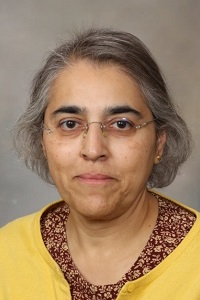
Aminah Jatoi
BIOGRAPHY
Aminah Jatoi, M.D., is Professor of Oncology and the Betty J. Foust, M.D. and Parents’ Professor of Oncology at Mayo Clinic in Minnesota, where she primarily cares for patients with gastrointestinal and gynecological malignancies. Her research focuses on supportive care issues in cancer patients. The author of 300+ publications, she seeks to mitigate side effects from the cancer treatment, anxiety related to the cancer and to cancer treatment, and distressing signs and symptoms related to the cancer itself. Her research has been funded by National Cancer Institute and various foundations. She also serves on the editorial boards for the Journal of Clinical Oncology; American Journal of Hospice and Palliative Medicine; Current Opinion in Supportive and Palliative Care; Journal of Cachexia, Sarcopenia and Muscle; Journal of Cancer Education, Journal of Geriatric Oncology, and the Mayo Clinic Proceedings.
In addition to her clinical and research activities, Dr. Jatoi is active in education. She has been recognized with several teaching awards, including Teacher of the Year. She is the director and principal investigator on a Mayo Clinic junior faculty training program funded by the National Cancer Institute and provides mentorship to many residents, fellows and junior faculty.
Cancer-Associated Anorexia and Cachexia: Defining a Palliative Role for Cannabis
The syndrome of cancer-associated anorexia and weight loss is troubling for patients with advanced cancer. Patients who experience this syndrome describe challenges associated with loss of appetite, loss of weight, and functional decline. These patients also appear to suffer an early demise. To date, palliative and therapeutic options for this syndrome have been limited and have focused primarily on loss of appetite. For the latter, hormonal agents, such as megestrol acetate and corticosteroids, have clearly been demonstrated to serve in a palliative role. Our group had conducted a trial that examined dronabinol, a semi-synthetic cannabinoid, for cancer-associated loss of appetite. Although this trial did not demonstrate that dronabinol was effective in this setting, the trial itself provides instruction on how other cannabinoids should be studied for the treatment or palliation of this syndrome in the future. This talk will focus on lessons learned from the above-referenced dronabinol trial and from other similar trials with the goal of providing a path forward.

Ron Johnson, Session Co-chair
BIOGRAPHY
Ron Johnson is a Program Director in the DNA and Chromosome Aberrations Branch in the Division of Cancer Biology, National Cancer Institute (NCI). Dr. Johnson oversees a portfolio of cancer biology research awards related to chemical and physical carcinogens, DNA damage, and gene expression with a focus on lung and liver cancers. Before joining the NCI in 2011, Dr. Johnson was a Project Team Leader at the NIH Chemical Genomics Center where his group profiled and screened small molecule libraries using cell- and protein-based assays. Prior to the NIH, Dr. Johnson lead research groups studying cell signaling in cancer and developmental biology in biotechnology and academic settings. Dr. Johnson received a Ph. D. in biochemistry from the Johns Hopkins School of Medicine and completed postdoctoral studies in developmental biology at the Stanford School of Medicine.

Aron H. Lichtman, Session Co-chair
BIOGRAPHY
Dr. Aron Lichtman (Professor and Associate Dean for Research and Graduate Studies) is a behavioral pharmacologist in the area of drug abuse, with an emphasis on the investigation of the endogenous cannabinoid system. His NIH-supported research has resulted in the publication of over 200 peer-review articles that have revealed: 1) the roles of endocannabinoid-regulating enzyme in pain; 2) the neural substrates and mechanisms of action underlying cannabinoid-induced behaviors; and 3) the consequences of chronic cannabinoid administration (i.e., dependence). His research utilizes a collaborative multidisciplinary approach examining the relationship between the pharmacological effects of cannabinoids on behavior and the underlying biochemical/molecular processes. His research group has provided proof of principle through complementary approaches using drugs and genetically engineered mice that the endogenous cannabinoid system contains promising therapeutic targets to treat a variety of disease states. This basic research has stimulated translational research investigating the efficacy of drugs targeting the endocannabinoid system in human studies. He received the 2013 Mechoulam Award for outstanding contributions to the filed by the International Cannabinoid Research Society (ICRS). In addition to his scholarship, Dr. Lichtman is a dedicated mentor, having trained 15 Ph.D. students, 13 postdoctoral fellows, and many other trainees.
Targeting the Endogenous Cannabinoid System to Treat Chemotherapy-induced Peripheral Neuropathy - Leads from Preclinical Studies
Chemotherapy-induced peripheral neuropathy (CIPN), manifesting as burning, tingling or numbness in the hands and feet, reflects a serious side effect associated with a variety of chemotherapeutics, including paclitaxel. As CIPN is resistant to traditional analgesics, a great need exists for novel antinociceptive targets to treat this condition. This presentation will describe recent and ongoing studies testing the consequences of inhibiting the major enzymes regulating biosynthesis and catabolism of the endocannabinoid 2-arachidonoylglycerol (2-AG) in a mouse model of CIPN. Specifically, we tested whether inhibition of monoacylglycerol lipase (MAGL) and diacylglycerol lipase (DAGL)-β, respective major 2-AG degradative and biosynthetic enzymes, would reduce paclitaxel-induced nociceptive behavior in mice. Both types of enzyme inhibitors produced antinociceptive effects. Because CIPN is a chronic condition that requires prolonged pain control, we examined whether the antinociceptive effects of these inhibitors would undergo tolerance following repeated administration. Repeated administration of high doses of MAGL inhibitors led to antinociceptive tolerance, while low doses produced enhanced antinociceptive effects. DAGL-β inhibitors also produced sustained antinociceptive actions following repeated administration. Mechanistic studies demonstrated that MAGL inhibitors reduce pro-inflammatory mediators in DRG and DAGL-β block paclitaxel-induced hyperexcitability of primary afferants in DRG. Finally, to ascertain whether MAGL and DAGL-β and inhibitors would interfere with paclitaxel’s anti-tumor effects, we evaluated their effects on the anti-proliferative and apoptotic activity of paclitaxel in the A549 human cell line of non-small cell lung cancer (NSCLC). None of the inhibitors affected cancer growth alone or interfered with the anti-proliferative or anti-apoptotic effects of paclitaxel in the A549 NSCLC cell line. Collectively, these findings indicate that 2-AG biosynthetic and catabolic enzyme inhibitors offer potential targets to treat pain related to CIPN through distinct mechanisms of action.

Sean McAllister
BIOGRAPHY
Dr. McAllister earned his bachelor's degree in biology and his doctoral degree in pharmacology and toxicology from the Medical College of Virginia Commonwealth University. His doctoral research focused on the interactions of cannabinoids with their endogenous receptors. He completed postdoctoral training at the Forbes Norris Amyotrophic Lateral Sclerosis Research Center, before joining California Pacific Medical Center Research Institute an affiliate of Sutter Health. Dr.McAllister’s group has an active research program focusing on the antitumor activity of both synthetic and plant-based cannabinoid compounds with the goal of developing therapeutic interventions for aggressive cancers. His findings have supported multiple clinical trial concepts for targeting brain cancer. Additionally, Dr. McAllister has investigated the potential of cannabinoids to inhibit neuropathic pain and neurodegenerative disease, and contributed to development of cannabinoid-based weight loss drugs.
Targeting Cancer with the Non-psychoactive Cannabinoid Cannabidiol
The plant Cannabis sativa is comprised of multiple compounds including flavonoids, terpenes, phenolic compounds, and cannabinoids. Scientific interest has primarily focused on cannabinoids, and of the more than 60 cannabinoids, the majority of therapeutic development has been directed toward the cannabinoids delta-9-tetrahydrocannabinol (THC), cannabidiol (CBD), and their derivatives. Many studies have shown that in preclinical models CB1 and CB2 receptor agonists can act as direct antitumor agents in a variety of aggressive cancers. This presentation will focus on antitumor activity of CBD, a cannabinoid that does not activate CB1 and CB2 receptors.
The presentation will first discuss the overall potential benefits of using cannabinoids to target cancer. It will also compare the structural diversity of various cannabinoid compounds. Mechanism leading to the antitumor activity of CBD across cancers will be presented, with a focus on generation of reactive oxygen specific (ROS) and inhibition of Id proteins, and FOXM1. The talk will also discuss the shared ability of both THC and CBD to induce autophagy and apoptotic-mediated cancer cell death. Finally, the presentation will discuss important knowledge gaps in the study of the antitumor properties of CBD, and suggest future research directions for cannabinoid and cancer research.

Linda Parker
BIOGRAPHY
Linda A. Parker, Ph.D. is a University Professor Emeritus at the University of Guelph, Ontario Canada. Until July 2020, she held the position of Tier 1 Canada Research Chair in Behavioral Neuroscience and Professor of Psychology and Neuroscience. She has published over 200 papers, most recently focused upon understanding the functioning of the endocannabinoid system and how plant derived cannabinoids act in the brain. She was the 2016 recipient of the Lifetime Achievement award from the International Cannabinoid Research Society received in Bukovina Poland in June. She is the current president of the Canadian Consortium for Investigation of Cannabinoids (CCIC), a Canadian nonprofit organization of basic and clinical researchers and health care professionals established to promote evidence-based research and education concerning cannabis. Her recent book, “Cannabinoids and the Brain”, was published in 2017 by MIT press. Her research is currently funded by operating grants from NSERC and CIHR. She is on the grant selection panels of both Natural Sciences and Engineering Research Council of Canada and Canadian Institutes of Health Research.
CBDA Acid (CBDA) and CBDA Methyl Ester - Highly Effective Treatments for Nausea and Vomiting Using Preclinical Animal Models
Despite the development of classic anti-emetics, chemotherapy-induced nausea is still problematic, with vomiting being somewhat better managed. If acute nausea and vomiting are not properly controlled, anticipatory nausea (a conditioned response to the contextual cues of the clinic) can develop. Anticipatory nausea is refractive to current anti-emetics, highlighting the need for alternative treatment options. The first approved medicinal use of Δ9-tetrahydrocannabinol (Δ9-THC) was for the treatment of chemotherapy-induced nausea and vomiting; however Δ9-THC is intoxicating and modifies general activity in preclinical models. Our group has provided considerable evidence that cannabidiol (CBD: 1-10 mg/kg, ip), cannabidiolic acid (CBDA: 0.005-0.1 mg/kg, ip) and the more stable analog cannabidiolic acid methyl ester (HU580: 0.001-0.1 mg/kg, ip) are highly effective treatments for nausea (conditioned gaping) and vomiting in preclinical animal models via activation of the serotonin 1A (5-HT1A) receptor, without modifying general activity. Indeed, CBDA and HU580 were approximately 1000 times more effective than CBD in reducing nausea-induced conditioned gaping in rats and vomiting in shrews. In order to utilize these compounds to manage nausea in the human or veterinary clinic, their effectiveness must be maintained when injected subcutaneously (s.c.) and when repeatedly administered. In these translational preclinical studies, we found that both acute and repeated (7 day) s.c. administration of CBD (5 mg/kg), CBDA (0.001 mg/kg) and HU-580 (0.001 mg/kg) had equivalen efficacy in reducing LiCl-induced conditioned nausea (gaping), and each of these effects was blocked by 5-HT1A receptor antagonism. When administered over 4 weekly conditioning trials, the anti-nausea effectiveness of each of these compounds was also maintained. Repeated CBD (5 mg/kg, s.c.) also maintained its anti-emetic efficacy in S. murinus. These findings suggests that these non-intoxicating cannabinoids may be useful anti-nausea treatments for chronic conditions, without the development of tolerance. The stable analog of CBDA, HU-580, may be a newly developed compound that should be evaluated for anti-emetic/anti-nausea effectiveness beyond these preclinical experiments.

Steven A. Pergam
BIOGRAPHY
Dr. Pergam received his MD from the University of Nebraska, his Infectious Diseases training at the University of Washington (UW), and his MPH from the UW School of Public Health. He is currently an Associate Member in the Clinical Research and Vaccine and Infectious Disease Divisions at the Fred Hutchinson Cancer Research Center. He is also an Associate Professor in the Division of Allergy & Infectious Diseases, and an Adjunct Associate Professor in the Dept. of Epidemiology at the UW School of Public Health.
Dr. Pergam serves as the Medical Director of Infection Prevention at the Seattle Cancer Care Alliance (SCCA), where he and his staff have developed a robust program to protect cancer and transplant recipients against major healthcare-associated infections (HAI). Dr. Pergam is actively involved in the development of new infection control strategies and educational programs, and has research projects that aim to better understand the epidemiology of nosocomial bacterial infections and respiratory viruses in high-risk immunocompromised hosts.
Risks of Cannabis Use for the Cancer Patient
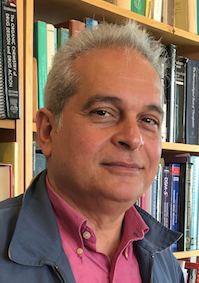
Danielle Piomelli
BIOGRAPHY
Daniele Piomelli studied pharmacology and neuroscience with James H. Schwartz and Eric Kandel at Columbia University (1983-1988), and with Paul Greengard at the Rockefeller University (1988-1990). In 2000, two of his mentors (Kandel and Greengard) were awarded the Nobel Prize for their contributions to physiology and medicine. After working at the INSERM in Paris (France) and at the Neurosciences Institute in San Diego, with Nobel Laureate Gerald Edelman, Daniele joined the University of California, Irvine, where he is now Louise Turner Arnold Chair in Neurosciences and Distinguished Professor of Anatomy and Neurobiology, Pharmacology and Biological Chemistry. Daniele is an author of >400 peer-reviewed articles in journals such as Nature, Science, Nature Medicine, PNAS and Nature Neuroscience, three full-length books, and 34 patents. He founded the department of drug discovery and development (D3) at the Italian Institute of Technology in Genoa (Italy), which he directed from 2007 to 2016, and three biopharmaceutical start-ups based on discoveries made in his lab. He is director of the NIDA Center of Excellence ICAL (Impact of Cannabinoids Across the Lifespan) and of UCI’s Center for the Study of Cannabis, He is Editor-in-Chief of Cannabis and Cannabinoid Research, the only peer-reviewed journal entirely dedicated to the study of cannabis, its derivatives, and their endogenous counterparts in the human body.
The Endocannabinoid System and Cancer Pain
The major psychoactive constituent of cannabis, 9-tetrahydrocannabinol (THC), affects pain, emotion and energy balance in humans and laboratory animals by activating CB1-type cannabinoid receptors in the brain and peripheral tissues. The two primary endogenous ligands of these receptors are the lipid-derived transmitters, anandamide and 2-arachidonoylglycerol (2-AG). Anandamide and 2-AG are released in select regions of the brain and are deactivated through a two-step process consisting of transport into cells followed by intracellular hydrolysis. Anandamide hydrolysis is catalyzed by fatty-acid amide hydrolase (FAAH), while 2-AG hydrolysis is primarily mediated by monoacylglycerol lipase (MGL). In my talk, I will provide an overview of the role of the endocannabinoid signaling system in the control of nociception and the possible value of cannabinoid and endocannabinoid-based medications in the treatment of cancer pain.

Sharon Ross, Session Co-chair
BIOGRAPHY
Dr. Sharon Ross is a Program Director in the Nutritional Science Research Group, Division of Cancer Prevention, National Cancer Institute, National Institutes of Health. In this capacity, she is responsible for directing, coordinating and managing a multi-disciplinary research grant portfolio in diet, nutrition, and cancer prevention. Topics in her portfolio and research interests include: nutrition and gene regulation/ epigenetics and cancer prevention; mechanisms linking diet, obesity and cancer; relationships between diet and microbiota during carcinogenesis; as well as discovery of nutrient action through emerging technologies. Dr. Ross has a Ph.D. in Nutritional Sciences from the University of Maryland, College Park, and a Master of Public Health from Johns Hopkins University School of Public Health with an emphasis in Epidemiology. Prior to joining the NCI, Dr. Ross worked at the Center for Food Safety and Applied Nutrition, Food and Drug Administration (FDA). At FDA, she was involved in scientific review and regulation development for health claim labeling. Before FDA, Dr. Ross was a Cancer Prevention Fellow in the Division of Cancer Prevention and Control, NCI. Sharon did her doctoral dissertation research in the Laboratory of Cellular Carcinogenesis and Tumor Promotion at NCI where her research topic concerned the effects of retinoids in growth, differentiation, and cell adhesion. Dr. Ross also holds a M.S. in Nutritional Sciences from the University of Connecticut and a B.S. in Nutrition and Dietetics from the University of New Hampshire.

Alejandro Salicrup, Session Co-chair
BIOGRAPHY
Dr. Alejandro Salicrup is the Senior Advisor for Global Health Research at the National Cancer Institute of the U.S. National Institutes of Health (NCI/NIH) Dr. Salicrup has over 30 years of experience implementing and managing programs related to basic, clinical and translational research and capacity building in Latin America, the Caribbean, Africa, Asia and Europe. At NIH, Dr. Salicrup works for NCI’s Center for Global Health and the Office of Complementary and Alternative Medicine (OCCAM). Dr. Salicrup is an immunologist by training. His previous experience includes working at the Fogarty International Center, the National Institute of Child and Human Development, and NIH’s Office of the Director. He also worked at the United Nations directing programs pertaining global health, capacity building and technology innovation in low-and-middle income countries with both WHO and UNESCO. Dr. Salicrup has published extensively and received several awards in Global Health including Fulbright Scholar (twice), Science Embassy Fellow, NIH Director Award, etc.

Gillian Schauer, Keynote Speaker
BIOGRAPHY
Gillian Schauer, PhD, MPH, is a Senior Consultant to a number of federal and state agencies, working on tobacco and cannabis policy, epidemiology, and research translation. Her consulting includes work with the U.S. Centers for Disease Control and Prevention, the Observatoire Français des Drogues et des Toxicomanies (in France), CANNRA (the Cannabis Regulators Association), and a number of U.S. states. She founded the Multi-State Collaborative for Public Health and Cannabis, a group that convenes representatives from states to share lessons learned. Dr. Schauer has an affiliation as a Research Scientist at the Alcohol and Drug Abuse Institute at the University of Washington (UW), and serves as Co-Director of the UW Tobacco Studies Program. She has more than 60 peer-reviewed publications on cannabis, tobacco, and co-use, and was a Senior Editor on the 2020 Surgeon General’s Report on Smoking Cessation. She has her PhD from Emory University in Behavioral Science and her Master of Public Health from the University of Washington.
Cannabis Policy, Epidemiology, and Research in an Era of Legalization

Michelle Sexton
BIOGRAPHY
Dr. Sexton is Assistant Adjunct Professor in the Department of Anesthesiology at the University of California San Diego and Assistant Clinical Investigator at Bastyr University. She earned her Doctorate in Naturopathic Medicine from Bastyr University in Seattle Washington, 2008. She completed a postdoctoral fellowship at the University of Washington in the Departments of Pharmacology/Psychiatry and Behavioral Sciences. Her NIH-funded pre-doctoral and postdoctoral research on the topic of cannabinoids and their roles in neuro-inflammation and neuro-degeneration, investigated cannabis use in patients with Multiple Sclerosis and impact on inflammatory markers. Dr. Sexton has presented her research internationally and published in peer-reviewed journals. Dr. Sexton’s clinical practice, research and teaching focus on the endocannabinoid system and potential roles for cannabis across a range of conditions and lifespan. She is a member of the International Cannabinoid Research Society, the International Association of Cannabinoid Medicine and the Society of Cannabis Clinicians. She maintains a clinical practice in San Diego, CA and is involved in starting the first cannabis clinic within a major institution at UCSD
Cannabis to Enhance Well-Being: A Worthwhile Goal
Cannabis use for its medicinal, relaxing and mood-enhancing properties has been documented across most ancient civilizations, and in contemporary times people are using cannabis to help manage anxiety. There is a plethora of cannabis preparations legally-accessed, over-the-counter by patients with cancer, while there is a paucity of data on the therapeutic dosing. Cannabinoids have well-known bi-phasic effects of on anxiety, and appropriate dosing is critical. Additionally, terpenes have relevant biologic activity that also are likely to contribute to the overall mood-altering effects of cannabis. Interrupting the cycle of pain, anxiety, and sleep disturbance is crucial for the quality of life in this patient population and cannabis has the potential to provide an all-in-one approach for these co-existing symptoms. In this talk, the evidence for cannabis, minor cannabinoids and terpenes to alleviate anxiety will be reviewed along with case examples. The potential for cannabis to have a role in the palliative care of cancer patients is undeniable and there is a need to further understand optimal dosing and preparations.

Douglas Throckmorton
BIOGRAPHY
As Deputy Director for Regulatory Programs, in the Center for Drug Evaluation and Research at the FDA, Dr. Throckmorton shares the responsibility for overseeing the regulation of research, development, manufacture and marketing of prescription, over-the-counter, and generic drugs in the United States. He is committed to ensuring that the benefits of approved drugs outweigh their known risks. Among his responsibilities in CDER, Dr. Throckmorton works on issues related to controlled substances, including cannabis and cannabis-derived products.
Dr. Throckmorton received his medical degree from the University of Nebraska Medical School and completed his residency and fellowship at Case Western Reserve University and Yale University, respectively. Prior to coming to the FDA in 1997, he conducted basic science research and practiced medicine at the Medical College of Georgia, Augusta, Georgia and Augusta Veterans Administration Hospital.
Food and Drug Administration (FDA) Role in the Regulation of Cannabis Products
This presentation will provide an update on the current FDA activities related to the regulation of cannabis products. This will include a discussion of FDA work on the regulation of medical products derived from cannabis, enforcement activities related to cannabis product marketing, and scientific work FDA does to support product development.

Chris Twelves
BIOGRAPHY
Dr Chris Twelves is Professor of Clinical Cancer Pharmacology and Oncology and Director of the NIHR Leeds Clinical Research Facility.
He is a medical oncologist with a particular interest in new drug development and clinical pharmacology; his clinical practice has been in colorectal and breast cancer.After training as an oncologist in London he was Senior Lecturer, then Reader, in Medical Oncology in Glasgow at the Beatson Oncology Centre before taking up his current post at the University of Leeds and St James’s Institute of Oncology.
Prof Twelves has been a member of the Cancer Research UK New Agents Committee, Chair of the New Drug Development Group of the EORTC and was Scientific Chair of the Berlin 2009 ECCO-ESMO 34 meeting. He has been involved in the development of several important new agents including capecitabine, and eribulin. Professor Twelves has a particular interest in early clinical trials and pharmacokinetics including intra-tumoural drug pharmacokinetics.
Professor Twelves has published over 200 papers in journals including the New England Journal of Medicine, Lancet and Journal of Clinical Oncology and spoken at numerous international meetings. He has also edited, or contributed to, several books including one on Phase I clinical trials and another on the design of Phase II clinical trials.
A Phase 1b Randomized, Placebo-controlled Trial of Nabiximols Cannabinoid Oromucosal Spray with Temozolomide in Patients with Recurrent Glioblastoma
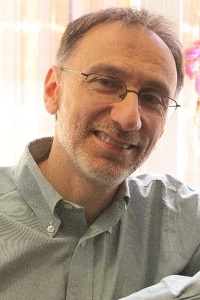
Guillermo Velasco
BIOGRAPHY
Guillermo Velasco studied Biology (1988-1993) and completed his doctoral thesis (1994-1997) at Complutense University (Madrid, Spain). Later he made a post-doctoral stay supported with an EMBO long-term scholarship (1998-1999) at the University of Dundee, Scotland. Since February 2008 Guillermo Velasco is Associate Professor at the Department of Biochemistry and Molecular Biology of the Complutense University and since the year 2019 coordinator of the laboratory of Translational Oncology Research at Hospital Clínico San Carlos (Madrid, Spain).
Guillermo’s research has focused on the study of the molecular mechanisms underlying the antitumor action of cannabinoids, as well as in the optimization of the use of these agents as anticancer agents.
Guillermo Velasco is authors of more than 90 articles and reviews published in internationally recognized journals in the fields of Molecular Biology and Biomedical research as well as to three patent applications. Likewise, these observations have contributed to set the bases for the development of three clinical trials in patients with Glioblastoma Guillermo Velasco is member of the steering committee of the Spanish Observatory of Medical Cannabis.
Towards the Utilization of Cannabinoids as Anti-cancer Agents
A large body of evidence shows that cannabinoids, in addition to their well-known palliative effects on some cancer-associated symptoms, can reduce tumour growth in animal models of cancer and specifically of gliomas. The mechanism of cannabinoid anticancer action relies, at least largely, on the ability of these agents to stimulate autophagy-mediated cancer cell death. Moreover, the combined administration of cannabinoids and temozolomide produces a strong anticancer effect, which correlates with an intense activation of the signalling route that triggers the activation of cytotoxic autophagy. Research conducted in our group has also led to the identification of mechanisms of resistance to cannabinoid anticancer action. For example, up-regulation of the growth factor Midlkine (MK) promotes resistance to cannabinoid anticancer action in gliomas via stimulation of the Anaplastic Lymphoma Kinase tyrosine kinase receptor (ALK); and could be a factor of bad prognosis in GBM patients. All these preclinical findings have facilitated the promotion of clinical studies to investigate the safety and efficacy of the combined administration of THC+CBD and temozolomide in GBM. In this presentation I will briefly discuss these issues and other possible future studies that may help to clarify whether cannabinoids may be useful as anticancer agents in patients with gliomas or other cancers.
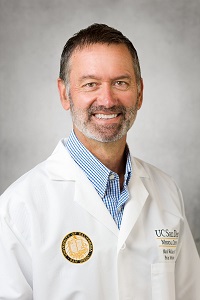
Mark Wallace, Session Co-chair
BIOGRAPHY
Dr. Wallace received his MD from Creighton University School of Medicine in 1987. He completed an Anesthesiology residency at the University of Maryland followed by an NIH training grant fellowship and a Clinical Pain Fellowship in the Department of Anesthesiology, University of California San Diego (UCSD). He is currently a Professor of Anesthesiology and the Chair, Division of Pain Medicine in the Department of Anesthesiology, UCSD School of Medicine and Director, Division of Clinical Research in the UCSD Clinical and Translational Institute (CTRI). Dr. Wallace is the recipient of numerous awards including the Award for Excellence in Clinical Care, American Pain Society Center of Excellence Award, and the Leonard Tow Humanism in Medicine Award. Dr. Wallace has authored and co-authored more than 300 articles, abstracts, books, and book chapters concerning pain research and management, including research on the use of medical cannabis to treat pain. He has also authored numerous book chapters and review articles on medical cannabis to treat chronic pain. He has extensive experience with all phases of clinical trials.
Cannabis and Pain Relief
Over half of the US states have legalized cannabis for medical use and more will follow. Patients are increasingly turning to medical cannabis to treat a myriad of symptoms with pain being the most frequent reason. Although medical use is high, there continues to be a lack of good evidence to support medical cannabis use. This presentation will cover the science, evidence and practical clinical application of medical cannabis. The science will review cannabinoid receptor nervous system distribution, pharmacodynamics and pharmacology. Pre-clinical and clinical evidence will be reviewed on cannabinoid analgesia and opioid interactions. Finally, the application of medical cannabis in clinical practice will be presented based on a growing knowledge extracted from the interaction between clinical research and clinical experience.
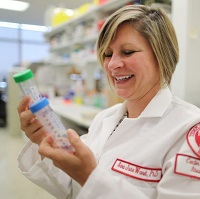
Sara Ward
BIOGRAPHY
Dr. Ward earned her PhD in psychology from the University of Connecticut in 1997. She earned her PhD in 2004 from Dr. Dave Roberts’ lab at Wake Forest University where she studied the interactive reinforcing effects of cocaine and heroin. Her postdoctoral research began at UNC Chapel Hill and was supported by a Ruth Kirschstein NRSA to study the effects of cannabinoid receptor modulation on palatable food and cocaine reinforcement. While finishing her postdoctoral work at Temple University with Dr. Ellen Walker, she expanded her research interests to rodent models of pain. Dr. Ward is currently an Assistant Professor of Pharmacology in the Center for Substance Abuse Research at Temple’s Lewis Katz School of Medicine. Her laboratory currently studies the therapeutic potential of non-psychoactive cannabinoid compounds for the treatment of nervous system disorders, including neuropathic pain, neuroinflammation, and substance abuse. Her work on the protective effects of the non-psychoactive cannabinoid CBD in rodent models of chemotherapy-induced neuropathic pain has been supported by the NIH since 2014. In the fall she received funding from the NCCIH to study the effects of CBD and additional Cannabis constituents alone and in combination for chemotherapy-induced neuropathic pain, dental pain, and visceral pain.
Cannabinoid-based Treatment Strategies for Pain Associated with Cancer
It is predicted in the coming years that there will be over 2.5 million users of legal medical cannabis, which comprises a wide variety of Cannabis cultivars with unique ratios of hundreds of potentially biologically active constituents outside of the primary psychoactive Δ9-tetrahydrocannabinol (THC). Currently the rationale for recommending and promoting various medical cannabis products lies nearly exclusively on anecdotal experience of patients, care givers, and health care professionals. Our laboratory was one of the first to report preclinical anti-neuropathic effects of CBD alone in a mouse model of chemotherapy-induced neuropathic pain (CIPN), and a follow-up study demonstrated robust synergistic anti-neuropathic effects with CBD+THC combinations. The primary goal of our laboratory is to empirically and quantitatively test the hypothesis that single Cannabis constituents outside of THC may possess therapeutic potential and that whether and how they act in discrete combinations can be quantified in relevant animal models of pain. Most recently, we have demonstrated that the Cannabis-derived sesquiterpene and putative cannabinoid CB2 receptor agonist β-CP also possesses therapeutic potential in the mouse model of CIPN but may not synergize when given in combination with CBD. We have also been testing non-psychoactive synthetic analogues of CBD in collaboration with the biotechnology company KannaLife Sciences and have identified a lead compound with improved safety and efficacy for CIPN both in vitro and in vivo. Taken together, preclinical evidence shows great promise for non-psychoactive cannabinoids for the treatment of CIPN and other chronic pain conditions, and clinical studies are warranted to determine the translatability of these findings.

Jeffrey D. White, Session Co-chair
BIOGRAPHY
Dr. White joined the Metabolism Branch of the National Cancer Institute (NCI) in 1990 as a Medical Staff Fellow where he performed laboratory research in immunology and molecular biology. While in the Metabolism Branch, he served in various positions culminating as director of the Clinical Trials and Clinical Care Program. In that capacity, he coordinated the development and administration of phase I and II clinical trials using unmodified and radiolabeled monoclonal antibody constructs. Dr. White has been principal investigator for and has reported the results from trials of various experimental treatments for patients with adult T-cell leukemia/lymphoma (ATL) and cutaneous T-cell lymphoma (CTCL).
